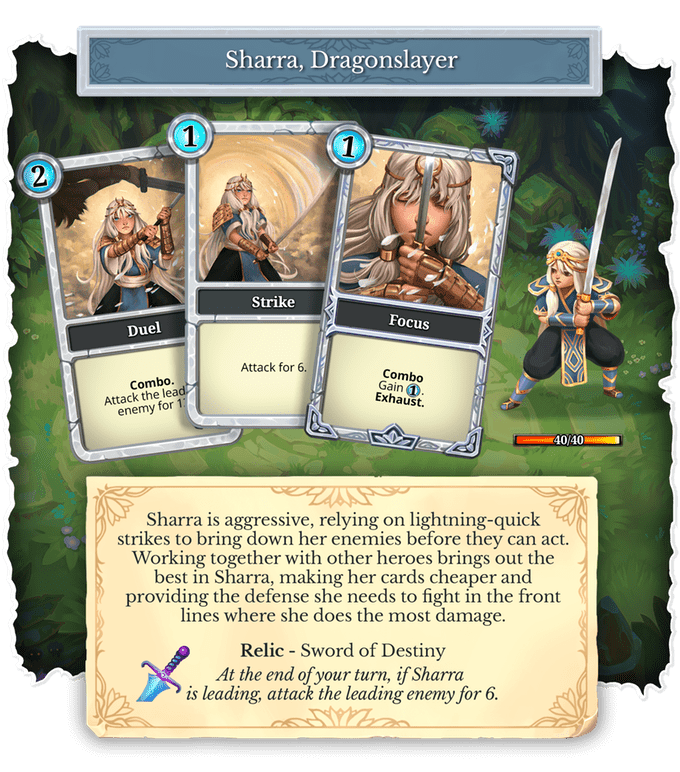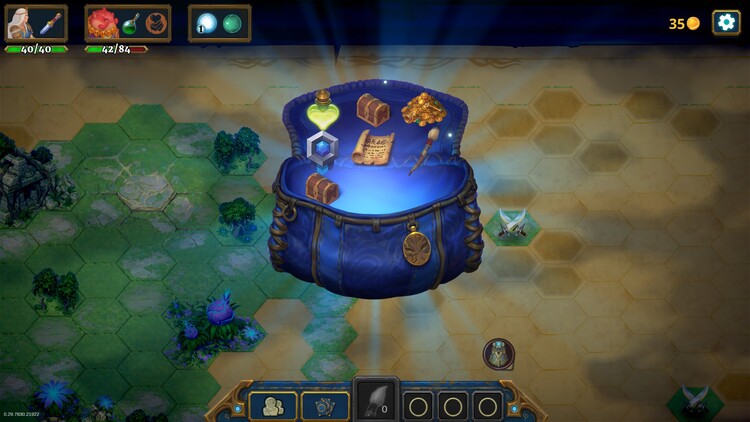
These additional “permanents” remain on the field, but can only be targeted by very specific (read: boss) enemies and usually possess a number of counters that reduce in number when triggered manually or by actions the player performs. Though not necessarily a cutting edge feature, the game also leans heavily on the ability to summon allies, which are akin to Magic’s token system. This adds a further risk and reward element to play, but character and build archetypes are usually telegraphed enough for you to make a wise strategic decision at any point during play. These can drastically improve the build for a particular run, but once you’ve selected a trait, you won’t be able to access the other two you neglected, instead having to move on to the next tier. Similarly, the game pushes players to continue to expand their deck’s size through the trait system, which allows the player to pick from one of three bonuses every time their deck meets a certain number of cards. As swapping positions and circumstantial bonuses are a major part of many card descriptions, it is essential that players learn to adapt their deck to this system as soon as possible in order to master Roguebook‘s combat. Roguebook attempts to further distance itself from its contemporaries with another defensive option atop blocking/shielding cards: the ability to swap the positions of your two heroes, giving them positional advantages based on their innate abilities and also deprioritizing their likelihood of receiving damage.

Utilizing this system and uncovering spaces with valuable rewards is an essential part of Roguebook‘s gameplay, and greatly differentiates it from other deck-building titles. As treasures are usually hidden from sight, the player reveals them by painting over a space they inhabit, though there are artifacts the player can obtain to reveal these permanently on the map. The Roguebook map is designed similarly to Faeria’s own hexagonal grid, so crafting lines only works on the diagonal, which might require some planning in advance. Similarly, there are runes of sight the player can encounter that will reveal a small section of the map, albeit one that might be a fair distance from their current position. There are also sight towers that will paint in a similar way to your brush strokes for free, so approaching them while using that resource is a careful consideration. However, both of these resources are limited, and can only be found as victory spoils from battles or in much less frequency on the map itself. Its ink system allows the player to fill in large spots of the map (or page) with brush strokes or create more precise, linear paths with inkwells. This is where the primary element of Roguebook‘s exploration comes into play. However, this isn’t necessarily the path one must take in order to encounter the boss, and probably shouldn’t be, either, seeing as slightly off the beaten path are troves of treasures, battles, and other treats worth exploring. At the start of each chapter, Roguebook crafts a straightforward path from its beginning to the end-of-act boss, and upon this path, you’ll usually find a single draft space, a normal battle space, and an elite battle space. You see, there are two phases to Roguebook‘s runs: the exploration phase and the combat phase, and although combat is the more exciting of the two, a far greater amount of time is spent exploring in comparison with just about any other roguelike deck-building title.

These characters will impact the kinds of cards you are able to find throughout the game world, which offers a number of “draft spaces” the player can access through clever play. Roguebook first tasks the player with creating a team of two unique characters to tackle three chapters in the cursed book of the title’s name. If a slower-paced affair with more transparent options and freedom seems up your alley, then Roguebook might be the game for you. In a similar vein, we’ve seen how the roguelike formula can be applied, so repurposing that in a manner that fits Faeria’s preestablished lore and art should be a cinch.īelieve it or not, Roguebook is just about as successful a product as its esteemed pedigree might imply, but it’s not the be-all and end-all experience one might be looking for from a deck-building roguelike/lite, though that might depend entirely upon how familiar you are with other games of this style.

What could possibly go wrong? Well, with a title that literally features the word “rogue,” one might expect a certain style of gameplay and progression to be on display. Roguebook is the brainchild of Richard Garfield, who some might know as the guy who made that sort of popular card game Magic: The Gathering, and Abrakam, the developers of the already successful Faeria (also on the Switch). Resident roguelike/deck-building expert Evan here, ready to report my findings on the latest addition to the Switch library.


 0 kommentar(er)
0 kommentar(er)
